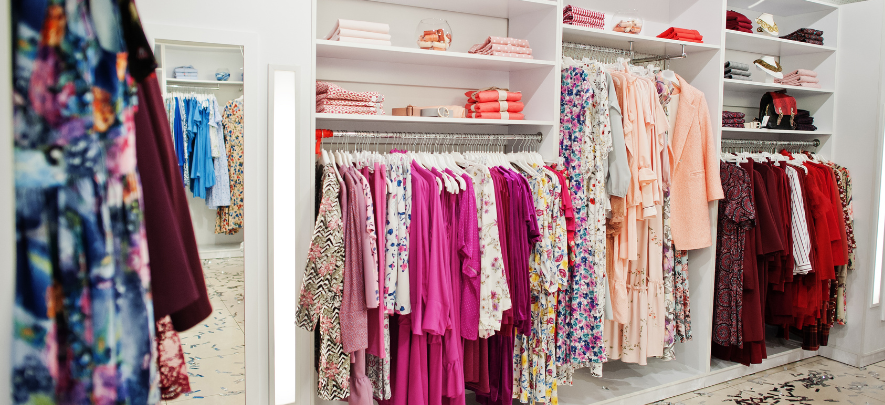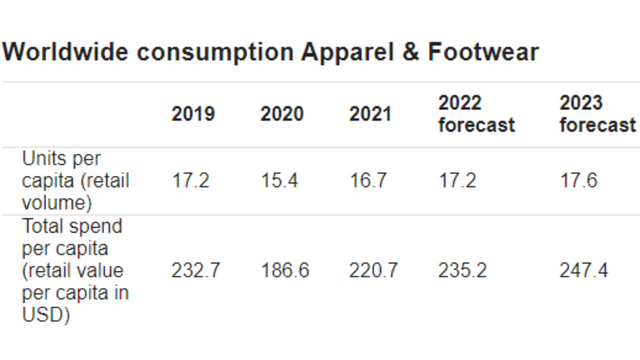How to start a clothing brand: Beginner's guide

Business Development
146 week ago — 10 min read
Before getting into the specifics, you may think about whether it's a good decision to get into the clothing industry or not. Or you may question why you should get into it? I ask why you shouldn't get into clothing. To make it clear, I'll give you some data about the opportunities. Clothing is an essential aspect of life, next only to food. Clothing is one of the never-dying industries that won't be affected by the digital revolution.
-
17 of the top 100 Forbes billionaires are from the fashion industry.
-
As per statistics, clothing consumption has grown explosively over the past 20 years. Fashion consumers buy over 80 billion new pieces of clothing every year. This is over 400% more than what we consumed just two decades ago. In 2016, approximately 107 billion units of apparel and 14.5 billion pairs of shoes were purchased worldwide. That amounts to every single individual on the planet buying roughly 13 garments and 2 pairs of shoes every year. If that seems like a lot, then keep in mind that this number doesn’t include the data of people in extreme poverty / unaccounted domestic clothing market sales.
-
In 2021, people consumed 16.7 units of apparel and footwear on average worldwide, spending $220,7 on average. Worldwide consumer spending on clothing and footwear amounts to an estimated $2,032,403.47 million in 2021. By 2025, that could amount to an estimated $2,571,939.42 million dollars.

All this said, let’s see how to start a clothing brand.
1. Make a simple business plan
By doing your research and planning everything out in advance, you are laying a solid foundation for your business. It's important to think about who your customers will be when you're creating a business plan. Consider who will be most interested in the products and services you're offering. There's more to starting a business than just having an idea. You'll need to come up with a name for your business and set some goals. "Map out a strategic business plan that centers around tangible, realistic goals you can work toward with confidence." Do your research and plan everything out in advance to create a solid foundation for your business.
Because your company exists to serve its customers, you should always keep them in mind when making decisions. Everything from the products you sell to how you communicate with them falls under this category. So, if women in their 30s are your target market, you should tailor your business decisions to maximise engagement with that specific audience.
-
Problem/opportunity
-
Solution
-
Key metrics
-
Competition
-
Unique proposition
-
Unfair advantage
-
Sales Channels
-
Customer targets
-
Cost structures
-
Revenue plan
2. Create your brand identity
Identify your target market or evaluate your personal style and find an apparel brand that reflects it.
What distinguishes your favourite brands? Is it their logo, an eye-catching advertising campaign, a storefront, or brand color? The visual identity of a brand is a powerful tool for telling a company's story, building customer affinity, and appealing to buyers. A well-executed brand visual identity outperforms a poorly designed brand visual identity in terms of brand recognition.
Here are some ideas for growing your brand and developing a strong, consistent visual identity.
-
Establish your brand. What are your guiding principles? What distinguishes you? These elements should be reflected in your visual identity.
-
Keep things simple. Customers may find it difficult to understand and remember a complex visual identity. Keep your logo and other design elements simple, legible, and easy to remember.
-
Make certain that your marketing materials only contain high-quality images.
-
Maintain consistency. Consistency increases audience recognition and trust. Colors, fonts, and overall design should be consistent across all of your materials.
-
Share your story. Your visual identity should tell the story of your company in a visually appealing and memorable way. Use design elements such as color, typography, and imagery to emotionally connect with your audience.
-
Make your buyers happy. Consider your target audience and the types of visuals that will elicit a positive response from them. Use colors, shapes, and images that they will like.
-
Change. As your company grows and evolves, so should its visual identity. Keep things interesting by updating your logo, website, and other marketing materials on a regular basis.
3. Prepare a launch calendar
Once you've completed the branding, start planning your launch schedule. Have a timeline for just about everything you are about to do, whether it's the next season of when you begin or a festive launch. Because you're new to the industry, you might be wrong about the duration it takes to complete a specific process, but it doesn't matter. Newcomers are the ones who propel any industry forward. List the processes you have ahead of sales and write down the time you genuinely think each process ought to take. It may be difficult to meet the deadlines for the first season. However, you should set a goal to accelerate each stage of work. As soon as you have determined the quantity of time that it should take to complete a procedure, set that deadline and attempt your best to meet it.
4. Design a collection or range of products to launch for the first season
Creating a product line is an important step in starting a new business. You can ensure that your target customers have a variety of options when it comes to purchasing your products by developing a line of products. The style, fit, and colors should be appropriate for the climatic conditions to sell according to the launch season. You might want to consider having coordinates that correspond to the main product. Assume your main product is a shirt collection. Consider wearing common trouser that matches the shirt theme, an overcoat that matches the theme, a tie, or a cap. - you get the idea.
5. Price the product
Price is an important factor when selling a product. If a product is too expensive, it is unlikely that people will buy it. On the other hand, if a product is too cheap, it is also unlikely that people will buy it.
Consider the price structure based on your target customer, sales channel, and sourcing method.
-
For online sales: Landed Product cost + Advertising cost + your profit + Portal charges + Courier charges + Tax = Product Price.
-
For retail sales: Landed Cost + Marketing Cost + Your Profit + Wholesaler Margin + Retailer Margin + Tax = Product Price.
But you'll have to work these on Markdown costs from the product price.
6. Sampling
If you have a product idea, you can find a manufacturer to help you make it. Make a few samples to put your idea to the test and see how it turns out. When you're satisfied with the results, you can tweak the design and mass-produce your product.
7. Book orders
You might be wondering why sales come before manufacturing. There are ways to sell before you produce. Try to pre-book orders based on your design book and samples with stores/portals/wholesalers/importers. You can have sales feedback well before your production. You’ll have the clarity to go with the design, fabric, size-wise quantity, fit, etc. With samples in hand, you should start selling, and taking orders simultaneously while producing.
8. Start manufacturing
There are several methods for producing it based on sample/price/ease of work/logistics/lead time.
-
You can either buy the raw materials and have them stitched on a contract basis
-
Alternatively, it can be outsourced as a package from yarn to dispatch.
Depending on the quantity, geography, and type of product, either method works.
Provide all necessary data to proceed with production and monitor each step. Make an action plan for each process and stick to it. Before accepting the delivery, inspect the products. Utilise logistics partners to deliver goods to customers or warehouses.
9. Research the best methods to market your brand
Launch a full-fledged sales campaign. There are different ways to market a brand. Some brands focus on advertising and public relations, while others may use direct-to-consumer marketing. It is important to research the best methods to market your brand so that you can reach the most people and generate the most revenue.
Some marketing methods that may be useful for your brand include:
-
Advertising: Ads can be targeted to specific demographics and can be used on television, radio, the internet, and other platforms. Ads can be expensive to create and maintain, but they can be effective in promoting your brand.
-
Public relations: PR can help your brand connect with the public and create
-
Brand Ambassador / Influencer Marketing
10. Sales data
Take sales data, feedback, and learning into consideration before getting into the next cycle of production.
Also read: Start, build & grow your own fashion ecommerce business
To explore business opportunities, link with me by clicking on the 'Connect' button on my eBiz Card.
Image source: Canva
Disclaimer: The views and opinions expressed in this article are those of the author and do not necessarily reflect the views, official policy, or position of GlobalLinker.
Network with SMEs mentioned in this article
View Harish 's profile
Most read this week
Trending














Comments (9)
Share this content
Please login or Register to join the discussion